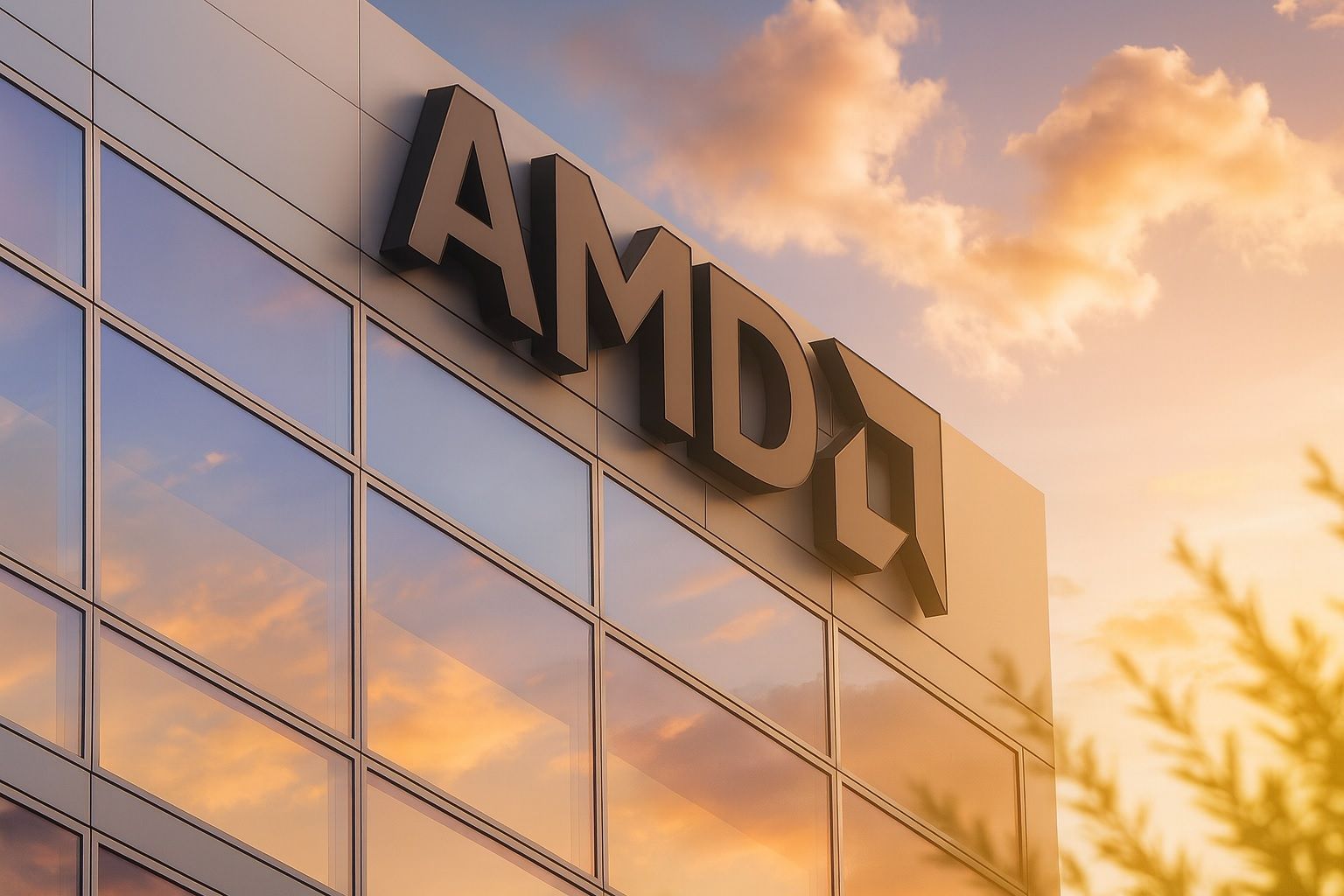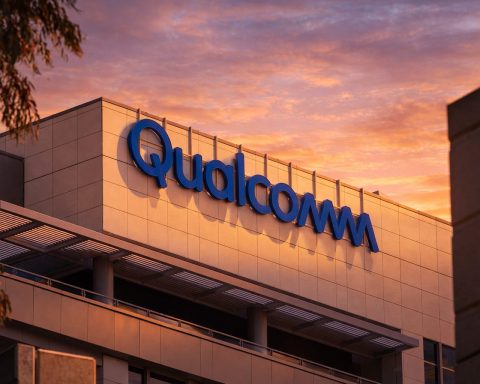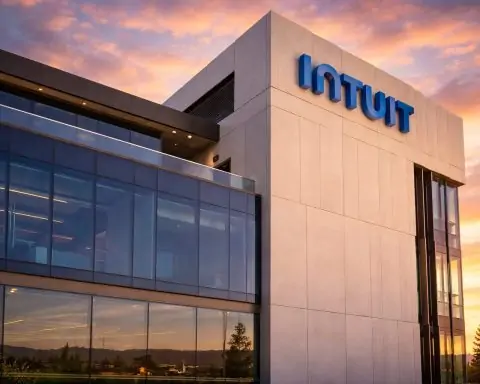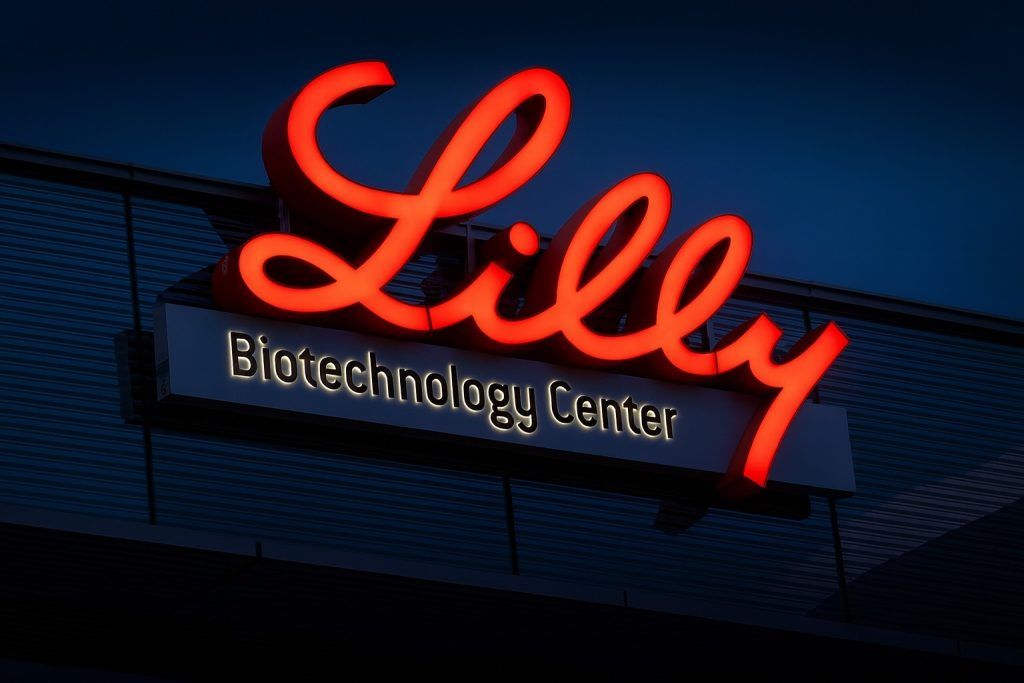- Stock Soars: AMD (NASDAQ: AMD) shares climbed to new highs around $238–$240 this week (Oct. 15–16, 2025) [1]. The stock is up roughly 80% year-to-date, vastly outperforming the semiconductor index (~32% gain) [2].
- AI Mega-Deals: Two blockbuster AI partnerships fueled the rally. On Oct. 6, AMD announced a deal to supply 6 gigawatts of Instinct AI chips to OpenAI (with OpenAI getting warrants for ~10% of AMD stock) [3]. Then on Oct. 14, Oracle unveiled plans to deploy 50,000 of AMD’s upcoming MI450 GPUs in its cloud superclusters [4]. The OpenAI pact alone sent AMD stock soaring ~30% in one day (Oct. 6), adding about $80 billion in market value [5].
- Analyst Upgrades: Wall Street quickly raised price targets on AMD. Jefferies and Wolfe Research now each peg AMD’s 12-month target at $300 (up from around $200 prior), and HSBC upped its target to $310 [6]. Many analysts now view AMD as a Buy (~60–65% of ratings) [7], though a few holdouts (Goldman Sachs, Citi) remain neutral with ~$210 targets [8].
- Competitive Landscape:NVIDIA still dominates the AI chip market with an estimated 90%+ share of data-center GPUs [9]. Intel, for its part, is attempting an AI comeback with new GPUs (code-named “Crescent Island”) and even struck a partnership that saw Nvidia invest $5 billion in Intel [10]. AMD is positioning itself as the “open” alternative to Nvidia’s closed platform – its Instinct accelerators and new “Helios” server racks use standard interfaces to integrate with other vendors’ hardware [11].
- Valuation & Risks: AMD’s valuation has ballooned amid the AI hype. The stock now trades around 40× expected 2026 earnings (trailing P/E ~125×) [12], well above historical norms. Broader tech indexes are at record highs on AI enthusiasm [13], but as one strategist warned, investors have priced in “extremely strong AI-driven growth,” leaving “little room for error” if AMD stumbles [14].
Stock Hits Highs on AI Hype
Advanced Micro Devices’ stock has been on fire in October 2025, reaching its highest levels in over a year. On Wednesday, Oct. 15, AMD surged over 8% and touched an intraday peak around $240.48, a new 52-week high [15]. It closed that day near $238.7, capping roughly an 80% year-to-date gain for the chipmaker’s shares [16]. By comparison, chief rival Nvidia’s stock is up about 40% in 2025, and Intel’s is flat-to-moderately higher after a rough 2024 [17]. AMD’s market capitalization now sits around $350 billion, putting it in the upper echelon of chipmakers by value [18].
This short-term jump follows a broader tech rally driven by excitement over artificial intelligence. The Nasdaq Composite index recently notched all-time highs as investors piled into AI-related stocks [19]. AMD has been a standout beneficiary of that trend. Even a partial U.S. government shutdown and ongoing trade tensions haven’t derailed market optimism – enthusiasm for AI growth has largely overshadowed macro worries in recent weeks [20]. “It’s an AI-fueled tech rally,” noted one market watcher, pointing out that AMD has vastly outpaced its peers in the semiconductor sector this year [21].
OpenAI and Oracle Deals Turbocharge AMD
The spark for AMD’s latest spike was a pair of blockbuster AI deals unveiled in early October. First came the OpenAI partnership. On Oct. 6, AMD announced a multi-year agreement to supply OpenAI – the high-profile creator of ChatGPT – with a huge quantity of advanced AI chips. The deal covers “hundreds of thousands” of AMD’s Instinct GPUs (about 6 gigawatts of compute capacity) starting in 2026 [22] [23]. In exchange, OpenAI received warrants to buy up to 160 million AMD shares at $0.01 each (roughly a 10% stake if fully exercised) [24].
AMD’s executives touted the OpenAI pact as a game-changer. “We view this deal as certainly transformative, not just for AMD, but for the dynamics of the industry,” said Forrest Norrod, AMD’s data center chief, of the OpenAI win [25]. CEO Lisa Su called it a “win-win, enabling the world’s most ambitious AI buildout” in partnership with OpenAI [26]. AMD’s CFO Jean Hu projected the OpenAI deal will deliver “tens of billions of dollars in revenue” and be “highly accretive” to earnings over the coming years [27]. In fact, AMD expects this and related AI agreements to generate over $100 billion in new revenue through 2029 [28] – a massive figure for a company with just $5 billion in quarterly sales currently. OpenAI’s CEO Sam Altman said the vast supply of chips will allow his team to “build enough AI infrastructure to meet [our] needs”, underscoring how critical AMD’s hardware will be to OpenAI’s growth [29].
The stock market’s reaction to the OpenAI news was immediate and dramatic. AMD shares soared 34% in a single day on Oct. 6 after the deal was announced [30]. It was AMD’s biggest one-day gain in nearly a decade, adding about $80 billion to the company’s market cap overnight [31]. Investors viewed the partnership as a major vote of confidence in AMD’s AI technology at a time when Nvidia has dominated the field [32] [33]. “Analysts said it was a major vote of confidence in AMD’s AI chips… but is unlikely to dent Nvidia’s dominance” in the near term [34] [35], Reuters reported, noting that Nvidia continues to sell every AI chip it can produce. Still, for AMD the deal signaled a breakthrough opportunity to claw into the AI market.
Just a week later, AMD revealed another big client win. On Oct. 14, Oracle Cloud announced it will purchase and deploy 50,000 of AMD’s next-generation MI450 GPUs as part of a new AI supercomputer initiative [36] [37]. Oracle said initial installation of those chips will begin in late 2026 (with expansion in 2027 and beyond) as it builds out “AI superclusters” using AMD hardware [38]. Oracle’s goal is to offer cloud customers an AI infrastructure with the “best price-performance [and] open, secure, and scalable” foundation available [39] [40]. Notably, AMD’s upcoming “Helios” server racks – which combine EPYC CPUs with Instinct accelerators – will form the backbone of these Oracle superclusters [41]. Industry watchers say this Oracle partnership puts additional pressure on Nvidia, whose own DGX AI systems will now face an “open” alternative in Oracle’s cloud [42].
AMD’s stock jumped ~3% on Oct. 14 following the Oracle news, even as broader markets sagged that day [43] [44]. While smaller in immediate scale than the OpenAI deal, the Oracle win further validates AMD’s foothold in the high-end AI accelerator space. It also deepens a strategic tie: Oracle is not only using AMD chips for its cloud, but reportedly had earlier struck a $300 billion/5-year cloud services agreement with OpenAI – meaning OpenAI, Oracle, and AMD are now tightly intertwined in the AI ecosystem [45]. “Demand for large-scale AI capacity is accelerating as next-generation models outgrow current clusters,” Oracle and AMD said in a joint statement, explaining the motivation behind their expanded partnership [46].
Wall Street’s Take: $300 Targets and Cautious Optimism
The recent AI deals have dramatically shifted analyst sentiment on AMD. Prior to October, many on Wall Street were uncertain if AMD could seriously challenge Nvidia in AI accelerators. Now, with billions in orders on the horizon, experts are racing to update their forecasts. “Virtually every major tech analyst raised their targets” after the OpenAI and Oracle announcements, notes one market report [47].
Several analysts now foresee AMD stock approaching the $300 mark in the next year. For instance, HSBC boosted its 12-month price target to $310 (maintaining a Buy rating) [48]. Jefferies likewise hiked its target from $200 up to $300 per share, citing the revenue potential of the AI wins [49]. Wolfe Research reaffirmed an Outperform rating with a $300 target as well [50]. A host of other firms – Mizuho, UBS, Piper Sandler and more – raised their targets into the mid-$200s following the news [51]. Overall, about 60–65% of analysts now rate AMD a “Buy”, up from roughly half before, according to Bloomberg data [52]. (By comparison, Nvidia has an even higher buy-rating consensus, while Intel is still mostly rated Hold or Sell by analysts.)
Even traditionally cautious voices have grown more optimistic. Wedbush Securities’ Matt Bryson, a long-time AMD watcher, said these deals finally give AMD the “revenue certainty” he’d been waiting for in its fledgling AI business [53]. Each 1 gigawatt of AI capacity deployed could translate to roughly $20 billion worth of AMD chips, Bryson estimated – so the 6 GW OpenAI project alone might exceed his previous sales forecasts for 2026–27 [54]. With that in mind, Bryson dramatically raised his earnings projections for the next two years and bumped his price target from $190 to $270 per share [55]. He argues that AMD’s collaborations and huge datacenter demand could drive sustained growth in coming years as the company ramps up production to fulfill orders [56].
At the same time, analysts caution that Nvidia remains far ahead in the AI race. “AMD has really trailed Nvidia for quite some time. So I think [this deal] helps validate their technology,” said Leah Bennett, chief investment strategist at Concurrent Asset Management, after the OpenAI announcement [57]. In other words, AMD’s wins are a strong endorsement of its chips – but Nvidia is still the incumbent to beat. Not everyone on Wall Street is convinced AMD’s stock can climb straight to $300 without hiccups. The average analyst price target is now in the mid-$200s [58], implying only modest upside from current levels after the recent rally. A few analysts (including at Goldman Sachs and Citi) are sticking to neutral ratings, arguing that AMD’s share price already reflects a lot of AI optimism [59]. Those skeptics have targets near $210 – well below where AMD trades now [60] – essentially urging caution that the stock may have run ahead of its fundamentals.
AMD vs. Nvidia vs. Intel: The Chip Race Heats Up
These developments come as the battle for AI chip supremacy intensifies among AMD and its two biggest rivals, Nvidia and Intel. By most measures, Nvidia still towers over the competition. The company enjoys an overwhelming market share in AI accelerators – its GPUs account for an estimated 90–95% of AI chip deployments in data centers [61]. Nvidia’s stock price and financials reflect that dominance: the company’s market capitalization recently hit an eye-popping $4 trillion, briefly making it the world’s most valuable company [62] [63]. After surging 171% in 2024, Nvidia shares have climbed another ~30–40% in 2025 [64], and the firm is on pace for over $200 billion in annual revenue – an order of magnitude above AMD’s sales [65]. The current landscape, as Dan Ives of Wedbush quipped, “remains [Nvidia’s] world, with everybody else paying rent,” given insatiable demand for Nvidia’s top-tier AI chips [66].
AMD, however, is emerging as a credible challenger for certain customers, especially those seeking an alternative to Nvidia’s proprietary ecosystem. Unlike Nvidia – which sells fully packaged servers and uses its own NVLink interconnect – AMD has championed an “open” approach [67]. Its Instinct AI accelerators and upcoming Helios server platform are designed to mix-and-match with other vendors’ components, utilizing industry-standard interfaces [68]. This pitch of flexibility and cost-effectiveness helped AMD win over OpenAI and Oracle, who were drawn to the price-performance advantages and openness of AMD’s solutions [69] [70]. Still, AMD has a long way to go. It remains a distant #2 in AI chips, and its $33 billion in expected 2025 revenue [71] is only a fraction of Nvidia’s. The next 12–18 months will tell if AMD can seize a bigger slice of the exploding AI market or if Nvidia will extend its lead as new generations of GPUs (and Nvidia’s own AI superchips) roll out.
Intel, meanwhile, represents a wild card in the competitive mix. The once-dominant PC chip giant has lagged badly in recent years – its absence in high-end GPUs left it on the sidelines of the AI boom, and Intel’s stock lost nearly half its value in 2022–2023 [72]. But 2025 has brought signs of a tentative turnaround for Intel. In August, the U.S. government took the extraordinary step of buying a ~10% stake in Intel (a ~$9 billion investment) to bolster domestic chipmaking [73] [74]. And in September, Nvidia itself agreed to invest $5 billion in Intel and partner on certain chip manufacturing and AI infrastructure projects [75] [76]. This unexpected Nvidia–Intel alliance sent Intel shares spiking 23% in one day, their biggest jump since 1987 [77]. As a result, Intel stock is up roughly 50% in 2025 (albeit from a very low base) [78] [79].
With fresh capital and partnerships, Intel is developing its own data-center GPUs and leaning into its strength in chip fabrication to court AI business. The company has branded itself a potential “third player” in AI hardware alongside Nvidia and AMD [80]. However, Intel still has much to prove. It remains far smaller by market value – about $130–150 billion currently, roughly half of AMD’s market cap and only ~3% of Nvidia’s [81]. Analysts are mostly holding a “wait and see” stance on Intel’s comeback [82]. In the near term, Intel’s push doesn’t directly threaten AMD’s trajectory; if anything, Intel partnering with Nvidia suggests AMD and Nvidia are the main event, while Intel plays catch-up. But longer term, if Intel executes well (a big “if”), it could complicate the competitive landscape by 2026–27. For now, AMD’s CEO Lisa Su has expressed confidence that AMD’s focused roadmap in CPUs and GPUs can continue taking market share from the bigger incumbents in both arenas.
Outlook: High Hopes, High Stakes
Looking ahead, AMD faces both enormous opportunity and significant risk. The company has firmly planted itself at the heart of 2025’s AI gold rush – a narrative shift few could have imagined a couple years ago. The OpenAI and Oracle deals give AMD a real shot to accelerate its growth over the next several years, potentially closing the gap with Nvidia in key markets. Wall Street’s forecasts reflect lofty expectations: if all goes well, AMD’s revenues in 2026–27 could be dramatically higher than prior estimates [83] [84], and the stock could have further room to run (with bulls eyeing that $300+ target range). In the short term, upcoming events like AMD’s Q3 2025 earnings report (scheduled for Nov. 4) will be closely watched for signs that the AI momentum is translating into financial results. Executives have already indicated that Q3 sales are on track for about $8.7 billion, which would be another quarterly record [85].
However, execution is key. AMD’s valuation now embeds a great deal of optimism – perhaps too much, in the view of some skeptics. At ~40 times forward earnings, the stock is priced for flawless growth [86]. Any stumble in delivering on the new AI projects, any delay in chip development, or any macroeconomic hiccup could trigger a sharp pullback. Moreover, competition will only intensify. Nvidia is unlikely to cede its crown easily; it has vastly greater resources and is rumored to be launching next-gen AI chips (and maybe its own AI cloud services) to stay ahead. Intel, backed by government and industry allies, will also be fighting to reassert itself. There’s even pressure from alternative architectures like ARM-based chips – which are rapidly gaining traction in servers – and custom AI silicon efforts (including OpenAI’s own in-house chip plans) [87] [88]. In other words, AMD must execute on multiple fronts to secure its place in the AI future.
For now, investors are giving AMD the benefit of the doubt. The stock’s dramatic ascent in 2025 shows that market sentiment is overwhelmingly positive on AMD’s AI pivot. As long as the AI spending boom continues and AMD meets its product roadmaps, the company could be poised for a new era of growth. But at today’s elevated stock price, there is little margin for error. As one strategist put it, investors have already priced in “extremely strong AI-driven growth” for AMD, leaving “little room for error” if reality falls short [89]. The coming year will be crucial in determining whether AMD truly graduates into the top tier of AI chip suppliers – or whether this year’s exuberance was a bit ahead of itself. In the high-stakes race for AI supremacy, AMD now has both high hopes riding on it and high expectations to meet.
Sources: Key information and quotes in this report are drawn from up-to-date market news and analysis, including TS2.tech’s tech stock reports [90] [91], Reuters news coverage [92] [93], Investopedia and financial press summaries [94], and commentary from industry experts and company officials [95] [96]. All linked sources are cited for reference.
References
1. ts2.tech, 2. ts2.tech, 3. ts2.tech, 4. ts2.tech, 5. ts2.tech, 6. ts2.tech, 7. ts2.tech, 8. ts2.tech, 9. ts2.tech, 10. ts2.tech, 11. ts2.tech, 12. ts2.tech, 13. ts2.tech, 14. ts2.tech, 15. ts2.tech, 16. ts2.tech, 17. ts2.tech, 18. ts2.tech, 19. ts2.tech, 20. ts2.tech, 21. ts2.tech, 22. www.reuters.com, 23. www.reuters.com, 24. www.reuters.com, 25. www.reuters.com, 26. ts2.tech, 27. ts2.tech, 28. www.reuters.com, 29. www.reuters.com, 30. www.reuters.com, 31. www.reuters.com, 32. www.reuters.com, 33. www.reuters.com, 34. www.reuters.com, 35. www.reuters.com, 36. www.reuters.com, 37. www.reuters.com, 38. www.reuters.com, 39. ts2.tech, 40. ts2.tech, 41. www.reuters.com, 42. ts2.tech, 43. www.reuters.com, 44. www.reuters.com, 45. www.reuters.com, 46. www.reuters.com, 47. ts2.tech, 48. ts2.tech, 49. ts2.tech, 50. ts2.tech, 51. ts2.tech, 52. ts2.tech, 53. www.gurufocus.com, 54. www.gurufocus.com, 55. www.gurufocus.com, 56. www.gurufocus.com, 57. www.reuters.com, 58. ts2.tech, 59. ts2.tech, 60. ts2.tech, 61. ts2.tech, 62. www.theguardian.com, 63. www.theguardian.com, 64. ts2.tech, 65. www.reuters.com, 66. www.theguardian.com, 67. ts2.tech, 68. ts2.tech, 69. ts2.tech, 70. www.reuters.com, 71. ts2.tech, 72. www.theguardian.com, 73. www.theguardian.com, 74. www.theguardian.com, 75. www.theguardian.com, 76. www.theguardian.com, 77. www.theguardian.com, 78. ts2.tech, 79. ts2.tech, 80. ts2.tech, 81. ts2.tech, 82. ts2.tech, 83. www.gurufocus.com, 84. www.gurufocus.com, 85. ts2.tech, 86. ts2.tech, 87. ts2.tech, 88. www.reuters.com, 89. ts2.tech, 90. ts2.tech, 91. ts2.tech, 92. www.reuters.com, 93. www.reuters.com, 94. www.investopedia.com, 95. www.reuters.com, 96. www.theguardian.com







